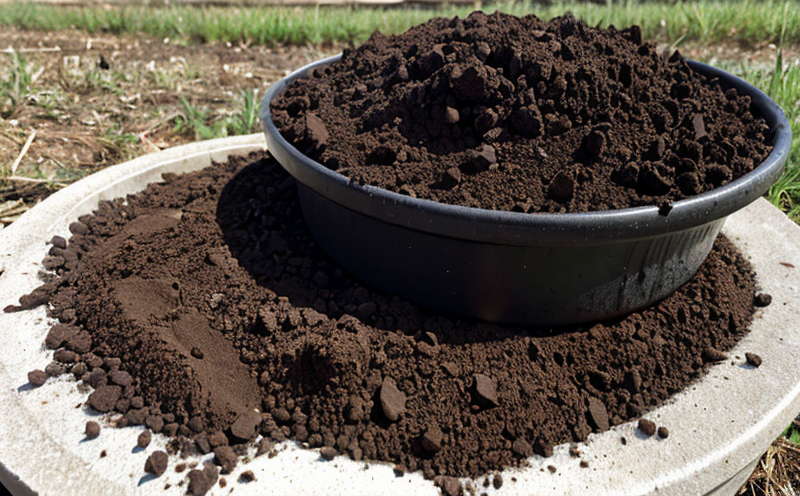EPA SW-846 Method 1313 Leachability of Hazardous Constituents in Residuals
The Environmental Protection Agency's (EPA) SW-846 Method 1313 is a critical protocol designed to assess the leachability of hazardous constituents from residuals, including solid waste and sludge. This method ensures that environmental impacts are minimized by ensuring that potentially harmful substances do not contaminate soil or groundwater during disposal.
SW-846 Method 1313 is part of a broader suite of tests intended to guide the management of hazardous wastes under the Resource Conservation and Recovery Act (RCRA). The primary aim is to determine if the constituents in residuals are leachable at concentrations that could pose risks to human health or the environment. This testing is essential for compliance with both federal regulations and state-specific requirements.
The method involves the use of a synthetic leachate solution, which simulates conditions found in landfills and other waste disposal facilities. The test subjects the residuals to this leachate over a specified period, typically 28 days, under controlled temperature and humidity conditions. After the incubation period, the leachate is analyzed for the presence of target analytes using various analytical techniques.
The list of hazardous constituents tested can vary but includes metals like lead (Pb), cadmium (Cd), mercury (Hg), arsenic (As), and hexavalent chromium (Cr(VI)). Additionally, organic compounds such as polychlorinated biphenyls (PCBs) and dioxins may also be evaluated. These constituents are of particular concern because they can persist in the environment for extended periods and bioaccumulate in organisms.
The testing process is intricate and requires precise specimen preparation. Residual samples must be homogenized to ensure a representative sample size, which is then divided into portions for different analyses. The synthetic leachate solution is prepared according to strict protocols, ensuring consistency across tests. The test results are used to assess the potential risks associated with the residuals and inform appropriate disposal practices.
The method’s accuracy and reliability depend on careful adherence to the prescribed procedures. Variations in specimen preparation or analytical techniques can lead to inaccurate results, which could have significant implications for regulatory compliance. Therefore, it is crucial that the testing is conducted by trained personnel using calibrated equipment and standardized methods.
Understanding the leachability of hazardous constituents is essential not only for waste management but also for environmental protection. By identifying potentially harmful materials early in the process, stakeholders can take proactive measures to mitigate risks. This includes selecting appropriate disposal methods or developing new technologies that reduce the leachability of hazardous substances.
Industry Applications
- Landfill Management: Ensures landfill operations comply with environmental regulations by identifying leachable constituents from waste materials.
- Sludge Treatment: Evaluates the safety of sludge for use as soil amendments or land application.
- Hazardous Waste Disposal: Determines if hazardous waste can be safely disposed of without posing risks to the environment.
The results from SW-846 Method 1313 are used by landfill operators, sludge treatment facilities, and hazardous waste disposal companies to ensure regulatory compliance. By identifying leachable constituents early in the process, these entities can take proactive measures to mitigate risks and comply with stringent environmental standards.
Competitive Advantage and Market Impact
Compliance with EPA SW-846 Method 1313 is not just a regulatory requirement but also a strategic advantage in the waste management and recycling industry. Compliance demonstrates a commitment to environmental stewardship, which can enhance an organization’s reputation and attract customers who prioritize sustainability.
By identifying leachable constituents early, organizations can optimize their waste management practices, potentially reducing costs associated with improper disposal or reprocessing materials. This foresight also allows companies to stay ahead of regulatory changes and market demands for more sustainable practices.
The ability to accurately assess leachability can differentiate a company in the market by showcasing its expertise in environmental compliance. This can translate into increased business opportunities, especially as sustainability becomes an increasingly important factor for consumers and regulators alike.
Use Cases and Application Examples
- Landfill Closure: SW-846 Method 1313 is used to ensure that landfills are closed in a manner that minimizes environmental impact. By assessing leachate from the landfill, regulators can confirm that the site has been properly managed and that no hazardous constituents remain.
- Sludge Management: In agricultural settings, sludge treated according to SW-846 Method 1313 is tested for its suitability as a soil amendment. This ensures that any residual materials are safe for use without causing contamination of the soil or groundwater.
Hazardous Waste Disposal: For facilities handling hazardous waste, SW-846 Method 1313 is used to evaluate the leachability of constituents from waste streams. This helps in determining if the waste can be safely landfilled or if alternative disposal methods are required.
Research and Development: In R&D environments, this method is utilized to develop new materials and processes that minimize leachability. By identifying potential risks early, researchers can innovate more sustainable solutions for waste management.





